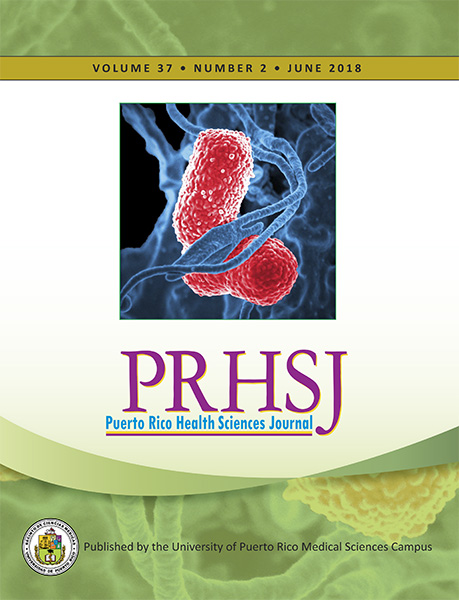Resumen
Objective: To determine the mean levels of glycated hemoglobin (HbA1c) in a subsample of non-diabetic Hispanic Puerto Ricans living in the San Juan metropolitan area (SJMA) and to assess the sensitivity and specificity of HbA1c as a diagnostic test for prediabetes. Research design and Methods: This was a secondary data analysis of the parent study, Burden of Diabetes and Hypertension in the Adult Population of the San Juan Metropolitan Area of Puerto Rico. Based on their HbA1c and fasting plasma glucose (FPG) values, 370 adults (147 males; 223 females) were classified as non-diabetics. An additional analysis of sensitivity, specificity, and predictive values for this subsample examined the association between FPG and HbA1c. Results: The mean HbA1c among the non-diabetic population was 5.38% (±0.23). Sensitivity, specificity, and the area under the receiving operating characteristic curve were 56.8%, 74.2%, and 84.3%, respectively, for the diagnosis of prediabetes, using HbA1c as the sole diagnostic test (P<0.001). Conclusion: This study demonstrated that HbA1c levels among the non-diabetic Hispanic population residing in the SJMA were very similar to those of non-Hispanic whites living in the US. Our results are consistent with those of other studies that have shown that the sensitivity of the HbA1c test is too low to be used in the diagnosis of prediabetes.
Authors who publish with this journal agree to the following terms:
a. Authors retain copyright and grant the journal right of first publication with the work simultaneously licensed under a Creative Commons Attribution License that allows others to share the work with an acknowledgement of the work's authorship and initial publication in this journal.
b. Authors are able to enter into separate, additional contractual arrangements for the non-exclusive distribution of the journal's published version of the work (e.g., post it to an institutional repository or publish it in a book), with an acknowledgement of its initial publication in this journal.
c. Authors are permitted and encouraged to post their work online (e.g., in institutional repositories or on their website) prior to and during the submission process, as it can lead to productive exchanges, as well as earlier and greater citation of published work (See The Effect of Open Access).
